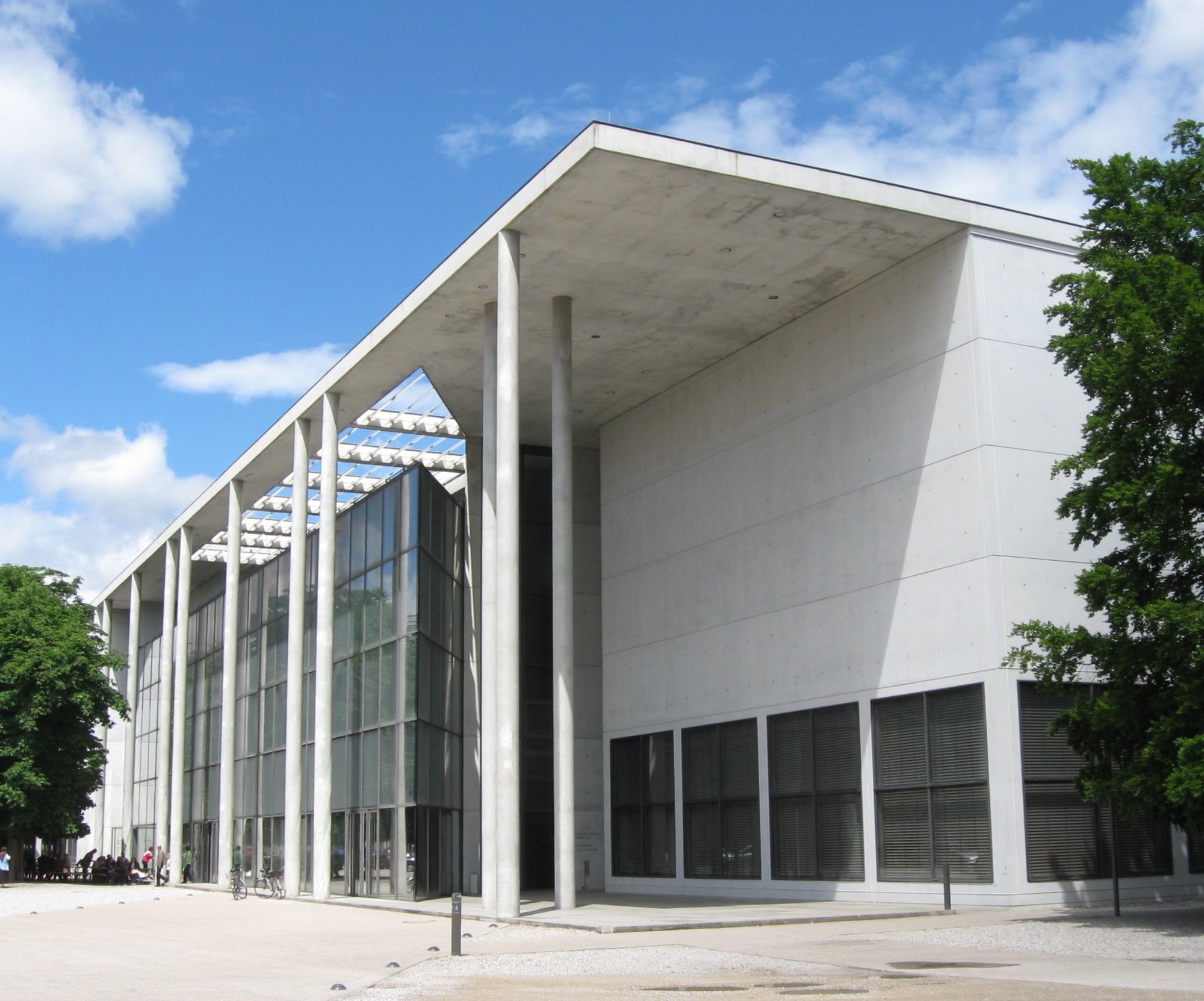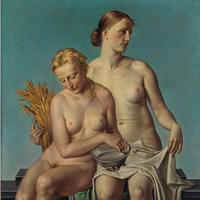More about Pinakothek der Moderne
Works at Pinakothek der Moderne

Contributor
Seven years after the Kingdom of Bavaria unveiled its second constitution, greenhorn King Ludwig I, eager to become a patron of the arts, came up with plans to build on the future site of the Pinakothek der Moderne (Gallery of Modern Art Munich).
The constitution was legally remarkable in that it promised to protect the civil rights of Protestants, the positive effects of which would allow a flourishing of the arts. Ludwig was able to satisfy the legacy of his predecessor, King Maximilian I, by building the Türkenkaserne, a barracks for 3,000 soldiers. However, balancing his military loyalty with his artistic temperament, Ludwig stopped the construction of the barracks at Barerstraße so as not to crowd the personal space of the Alte Pinakothek, the "old Gallery," which was then the largest museum building in the world, and is still truckin' in 2020.
For seven years, starting in the mid-90's, Stephan Braunfels and a large team conceived, designed and built the most recent building for the Gallery of Modern Art, which features an astonishing rotunda made of glass. Unfortunately, within the decade, the rotunda started to crack, which led to a shutdown for several months and a hurling of accusations between the State, who claimed that the architect was responsible, and the architect, who said the State should have dropped more dough on the thing if they didn't want it to crack!
In 1981, the Bavarian Free State decided to make four great museums roommates, and the reality show that emerged is the Pinakothek der Moderne, consisting of a combination of the following four collections:
- 1. Naturally, the first and most glamorous of the group is the art collection, which boasts a heap of more than 20,000 works of many different periods. The assets include the surrealist collection of Theo Wormland and the collection of Sofie and Emanuel Fohn, the latter of whom was a student of Lovis Corinth. The Fohn collection is more openly political than most, as it maintains a comprehensive account of works confiscated and libeled by the fascist administration, whose headquarters were once just a quick motorcar ride away. The Sofie and Emanuel Fohn collection keeps alive the names of such artists as Johanna Schütz-Wolff, Else Lasker-Schüler, Paula Modersohn-Becker, Kathe Kollwitz, and Einstein's friend Rabindranath Tagore.
- 2. The State Graphics Collection of Munich originated with the 1758 copper and drawing collection of Carl Theodor von der Pfalz, who once declared war on France. In 1794, with the French army advancing, the Bavarians whisked it away to Munich from Mannheim, where parts of it resided at the Alte Pinakothek and the Neue (New) Pinakothek, yet a third Munich art museum!
- 3. An unusual and exciting collection is Die Neue Sammlung (The New Collection), founded by the State as the world's first museum of design, and featuring about 100,000 objects, including everyday ceramics, vehicles and transportation systems, computer hardware, photography and jewelry.
- 4. Finally, the Architecture Museum of the Technical University of Munich is by far the largest architectural collection in the Republic. Exhibitions have shown the work of Lina Bo Bardi and Le Corbusier, examined the architecture of malls and stadiums, and reflected on the "poetry of everyday life" in the houses of Kazunari Sakamoto.
Sources
- Dentler, Dorothea. Die Pinakothek der Moderne - inszenierte Räume für die Kunst. München: GRIN Verlag, 2007.
- Katalog der Gemälde-Sammlung der Kgl. Älteren Pinakothek in München. München: Druck von Knorr & Hirth.
- Kleinschmidt, Christoph, and Christine Hewel. Topographien der Grenze: Verortungen einer kulturellen, politischen und ästhetischen Kategorie. Würzburg: Königshausen & Neumann, 2011.
- Lankes, Christian. München als Garnison im 19. Jahrhundert: die Haupt- und Residenzstadt als Standort der Bayerischen Armee von Kurfürst Max IV. Joseph bis zur Jahrhundertwende. Hamburg: Mittler, 1993.
- Schultejans, Britta. "'Schaustelle' der Pinakothek soll junges Publikum begeistern." Abendzeitung, Apr. 11, 2013, https://www.abendzeitung-muenchen.de/inhalt.pinakothek-der-moderne-scha…
- Schulz-Hoffman, Carla. Die Sammlung Sofie und Emanuel Fohn. München: Hirmer, 1990.
- "The Inventory of the TUM Architecture Museum." TUM, https://mediatum.ub.tum.de/647610.
Featured Content
Here is what Wikipedia says about Pinakothek der Moderne
The Pinakothek der Moderne (
German: [pinakoˈteːk deːɐ̯ moˈdɛʁnə], Pinakothek of the Modern) is a modern art museum, situated in central Munich's Kunstareal.
Check out the full Wikipedia article about Pinakothek der Moderne













